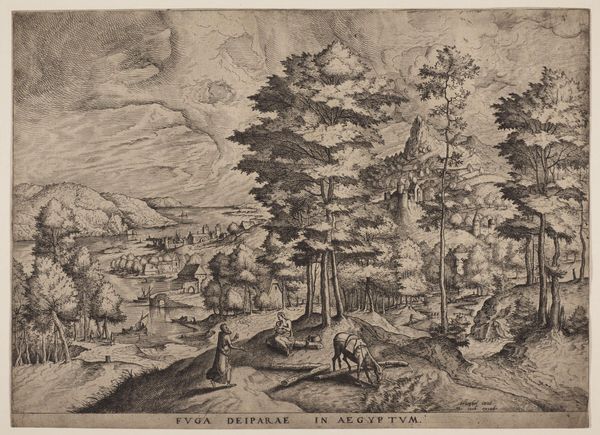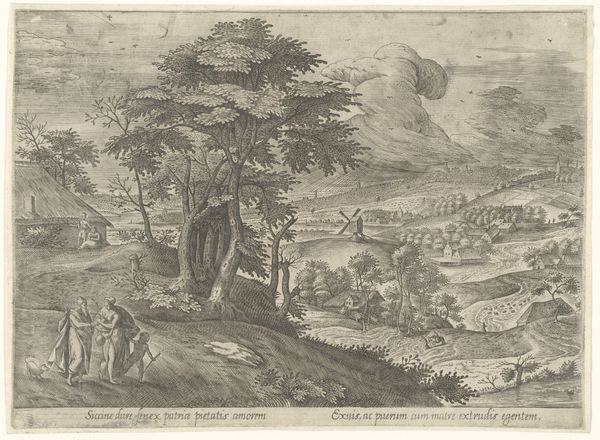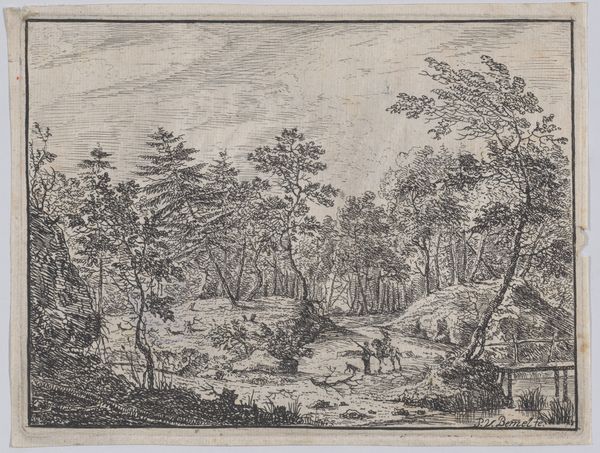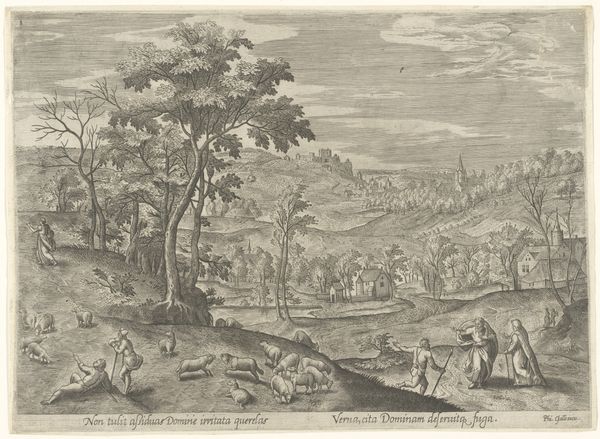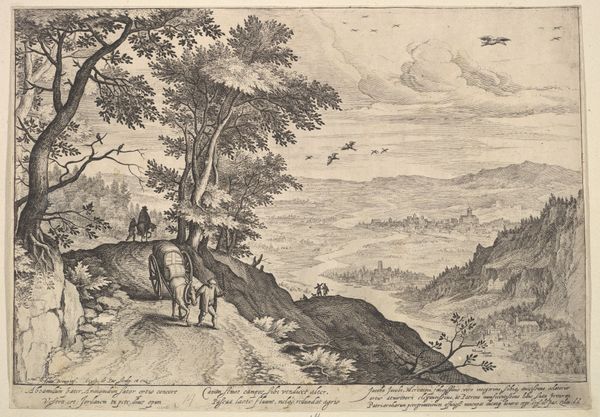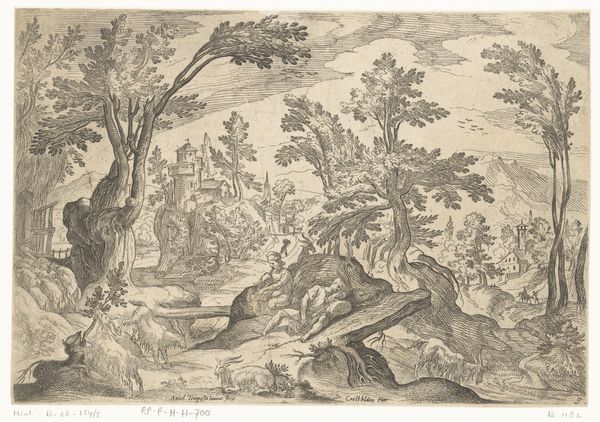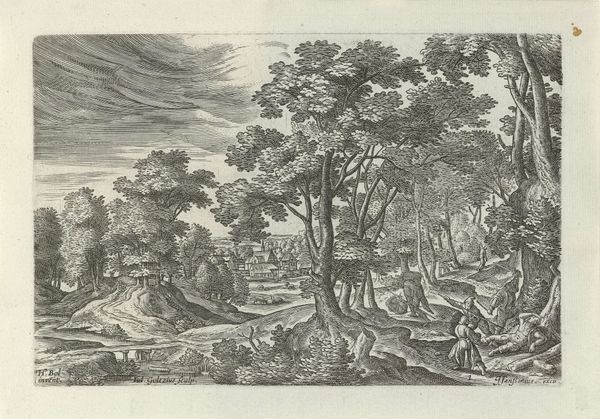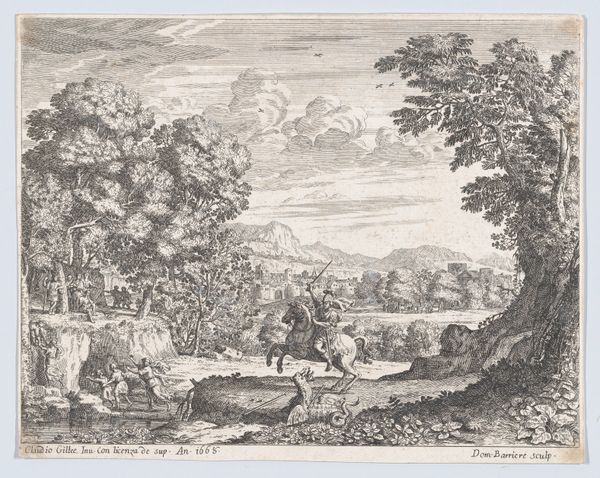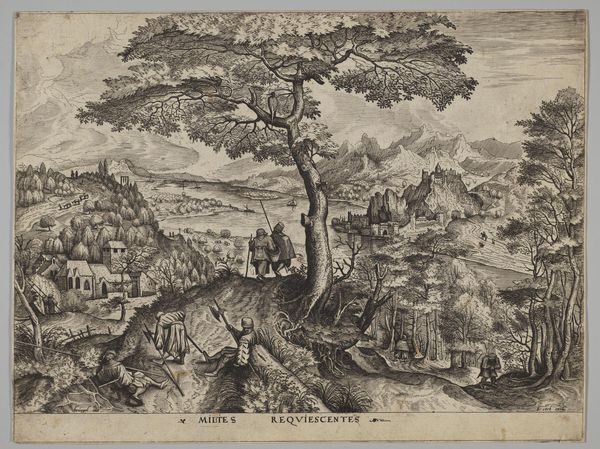
Flight into Egypt (Fuga deiparae in Aegyptum) from The Large Landscapes 1550 - 1560
0:00
0:00
drawing, print, ink, engraving
#
drawing
#
ink drawing
#
pen drawing
# print
#
pen sketch
#
landscape
#
ink
#
history-painting
#
northern-renaissance
#
engraving
Dimensions: Sheet: 12 3/8 x 16 5/8 in. (31.5 x 42.2 cm)
Copyright: Public Domain
Curator: Alright, let’s look closely at this detailed landscape scene. This is “Flight into Egypt (Fuga deiparae in Aegyptum) from The Large Landscapes,” created by Johannes van Doetecum I, sometime between 1550 and 1560. It’s currently part of the collection here at the Met. Editor: My first impression is one of almost overwhelming detail—and tranquility, despite the journey depicted. The scale feels vast, dwarfing the figures. I wonder what’s going on here... Curator: Precisely! This engraving depicts the biblical flight of Mary, Joseph, and the infant Jesus into Egypt. You can see them nestled within this sprawling panorama. Editor: So the engraving uses an almost pointillist approach, doesn’t it? Breaking down the landscape into discrete marks, building up these almost impossibly dense textures. Curator: It's incredible, isn't it? Van Doetecum, working from an earlier design, likely used both engraving and etching techniques here, allowing for that incredibly fine detail and those subtle tonal variations to emerge. Think about it, engraving would allow the line to cut very precisely with the burin. Then the etching introduces a lighter tone. Editor: And look at the composition—it’s clever how the artist has used the trees to create almost a curtain, framing the Holy Family and drawing our eyes into their story within this enormous world. Curator: Absolutely, the landscape isn't just a backdrop; it's practically a character itself. This emphasizes the magnitude of their journey, making you consider the vulnerability of these figures. You might also observe the mountain backdrop resembling a city. It's one way of incorporating symbols of civilizations of this region. Editor: It’s interesting that the artist almost hides the figures in plain sight. Like, we know their narrative is profoundly important, yet here they are almost consumed by the immensity of the world. I suppose we each feel swallowed sometimes? Curator: I agree; It makes us consider both the historical context of religious upheaval and that personal aspect. Art making those considerations allows us to see history's reach. Editor: Ultimately, this image has invited contemplation, reflecting on how art invites narratives.
Comments
No comments
Be the first to comment and join the conversation on the ultimate creative platform.
